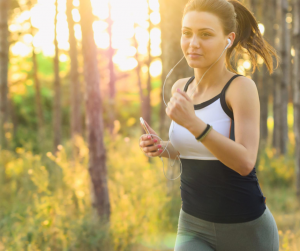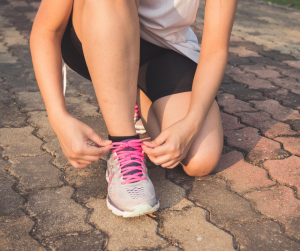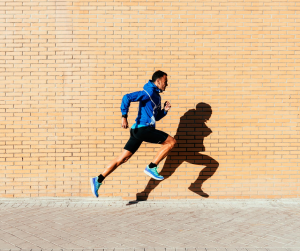
 Running has one of the largest participation rates in Australia, with over 3 million people participating in recreational running annually [1]. This is an increase of almost 2.5x from a 2006 survey conducted by Sports Medicine Australia [2], and with the recent COVID-related temporary closures of gyms and other recreational facilities seeing more people taking to the streets to meet their exercise needs, running seems to only be gaining popularity.
Running has one of the largest participation rates in Australia, with over 3 million people participating in recreational running annually [1]. This is an increase of almost 2.5x from a 2006 survey conducted by Sports Medicine Australia [2], and with the recent COVID-related temporary closures of gyms and other recreational facilities seeing more people taking to the streets to meet their exercise needs, running seems to only be gaining popularity.
It’s no surprise really – running is affordable, accessible at any time, social, has proven psychological and health benefits, and the only barrier to starting is a pair of shoes and perhaps some timely weather. Unfortunately, up to 70% of recreational and competitive runners suffer from an injury in any 12-month period [2]. Our podiatry team here at My FootDr works extensively with runners to help them optimise their performance and maximise their recovery from injury, today we’re sharing the top ten running injuries, how they’re caused and when you should seek help.
Runner’s Knee
Getting pain in or around the kneecap during or after running? It could be ‘runner’s knee’, otherwise known as patellofemoral pain syndrome (PFPS).
Approximately 42% of all running injuries affect the knee [2], and runner’s knee is one of the most common causes. Women tend to be affected at a higher rate than men [3], which may be explained by a generally wider-set pelvis resulting in more force through the knees.
PFPS results from improper tracking of the patella (kneecap) as the knee repetitively bends and straightens during running. This can cause pain and discomfort, as well as potential damage over time to the underlying joint.
Seek help when: You start experiencing aches and twinges in and around the outside of your knee during or after running – even if the pain settles as you continue to run. You may also notice swelling and stiffness after resting, as well as pain when bending your knee – like walking upstairs. Runner’s knee can worsen quickly without the right care.
Iliotibial Band Friction Syndrome
Getting pain on the outside of your thigh that extends down to your outer knee? It could be your iliotibial band.
Iliotibial band syndrome is the second most common running injury [4], though it is often mistaken for a knee injury due to the tenderness present on the outer knee. The band itself runs from your hip, down the outside of your thigh to connect to the knee and the shin bone. As your knee repetitively bends and straightens in running, the band rubs against the side of the thigh bone in the area of the knee, resulting in painful irritation.
Seek help when: You start experiencing pain on the outer knee, which may or may not extend up your outer thigh, approximately 2-3km into your run. You may also feel some tightness along the band, along with some clicking or popping as the problem progresses.
Plantar Fasciitis
 Are you dreading those excruciating first steps in the morning? But then the pain at the heel eases or disappears after walking for a short time? That’s a telltale sign of plantar fasciitis.
Are you dreading those excruciating first steps in the morning? But then the pain at the heel eases or disappears after walking for a short time? That’s a telltale sign of plantar fasciitis.
Your plantar fascia is a strong connective tissue band that starts at the bottom of the heel and fans out to attach to all five toes. Every time you take a step, the fascia stretches as part of its normal foot function. When we overuse or overload the fascia, like by quickly increasing the intensity of our activity (which the fascia isn’t used to!) or switching to a pair of shoes that leaves the fascia unsupported, damage to the fascia can develop at its insertion at the heel.
Seek help when: You start experiencing pain at the bottom of the heel first thing in the morning, and when standing after resting your feet. Irritation and damage to the fascia can progress to a tear if it continues to be overloaded and overused – so be careful and seek help quickly.
Meniscus Injury
Have a swollen knee and getting pain when bending or twisting it? You may have a meniscus injury.
Your meniscus is a thick ‘C’ shaped disc that sits between the ends of your shin bone (tibia) and thigh bone (femur) in your knee joint. There are two menisci in each knee joint, and they work to help distribute the weight-bearing stress placed on the joint and absorb shock. When you quickly change direction during running, or twist the body while your leg is still firmly planted on the ground, a partial or complete meniscus tear can occur. In older adults, a meniscal injury may also be degenerative, with damaging changes building up over time.
Seek help when: Either, you experience sudden, sharp pain in the knee after a quick twisting movement during running, or you notice gradual swelling over one to two days in your knee, with pain exacerbated by bending or twisting the knee. A meniscus injury can progressively worsen without care.
Shin Splints: Medial Tibial Stress Syndrome
 Is pain at the front or inside of your shins slowing down or stopping you in your tracks? You may have medial tibial stress syndrome (MTSS).
Is pain at the front or inside of your shins slowing down or stopping you in your tracks? You may have medial tibial stress syndrome (MTSS).
Often referred to as shin splints, this exercise-induced pain can cause limiting pain and discomfort along the shins that often affects runners. While the exact cause of shin splints has been long debated, it is thought to be related to excess stress and twisting forces to the shin bone and increased pressure in the knee compartments of the lower leg [4], though the inflammation of the lining of the shin bone has also been considered as a causal factor.
Seek help when: You start experiencing shin pain during your run that makes it difficult and painful to continue.
My FootDr Have Clinics Australia-Wide
If you feel you’re being held back from running safely and comfortably, My FootDr has clinics across Australia to help you perform at your best. Book your appointment by calling us on 1800 FOOTDR or booking your appointment online here. You can find your nearest My FootDr podiatry centre here.
Check out part two of the ten most common running injuries here.
References


